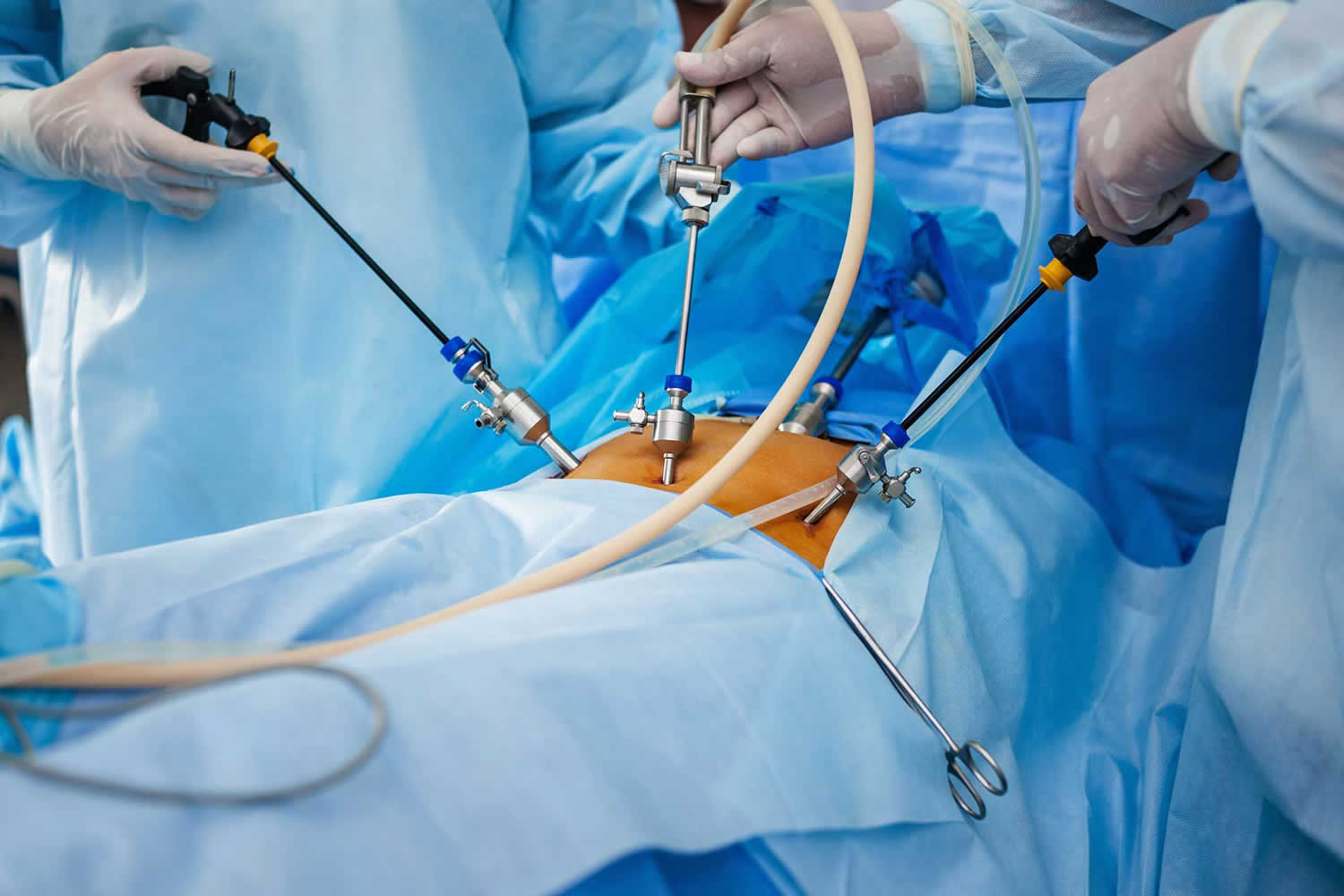Laparoscopic Surgery
WHAT IS LAPAROSCOPY?
We, at Bhagwandas Hospital, provide the best laparoscopic surgery in Sonipat. Let’s know about what laparoscopic surgery is and how it is done.it is also known as minimally invasive surgery or keyhole surgery. In this surgery, doctors make small invasions in the stomach. then the laparoscope is inserted through the invasions made. Laparoscopy is a medical wired-like instrument which is having a camera at its end and it is put under the body of the patient and sends photos of what’s inside.

Our Speciality
Advantages Of Laparoscopic Surgery:
1) the patient is less terrified
2) less tissue damage
3) lower risk
4) the smaller invasions are practically more appealing than the bigger ones.
Applications Of Laparoscopic Surgery:
1) gall bladder remover
2) hernia repair
3)removal of the appendix
4)gynecological procedures
5) bariatric surgery
6) some urological procedure
Benefits of Laparoscopic Surgery :
Smaller Incisions: One of the main benefits of laparoscopic surgery is that it requires only a few small incisions, typically around 0.5 to 1.5 centimeters in length. These smaller incisions result in less tissue trauma, reduced scarring, and minimal post-operative pain.
Reduced Blood Loss: Laparoscopic surgery involves the use of specialized instruments and techniques that allow for precise control and minimal blood loss during the procedure. This reduces the need for blood transfusions and lowers the risk of complications related to significant blood loss.
Faster Recovery Time: Since laparoscopic surgery involves smaller incisions and reduced tissue trauma, patients generally experience a faster recovery compared to open surgery. They may have shorter hospital stays and can often return to their normal activities sooner.
Less Pain and Discomfort: Laparoscopic surgery is associated with less post-operative pain and discomfort compared to open surgery. This is because the small incisions and specialized instruments used in laparoscopic procedures cause less disruption to surrounding tissues.
Reduced Risk of Infection: With laparoscopic surgery, the smaller incisions and reduced tissue handling result in a lower risk of surgical site infections. The risk of complications related to wound infections is significantly reduced.
Improved Cosmetic Outcome: The smaller incisions used in laparoscopic surgery result in smaller scars and better cosmetic outcomes. This can be particularly important for surgeries performed in visible areas of the body.
Faster Return to Normal Activities: As laparoscopic surgery involves less tissue trauma and a faster recovery, patients can often resume their normal activities, including work, exercise, and daily tasks, more quickly compared to open surgery.
Lower Risk of Hernias: Laparoscopic surgery reduces the risk of incisional hernias, which can occur at the site of larger incisions in open surgery. The smaller incisions used in laparoscopic procedures are less likely to result in hernia formation.
Better Visualization: Laparoscopic surgery uses a high-definition camera that provides magnified, detailed, and three-dimensional visualization of the surgical site. This allows surgeons to have a better view of the affected area, enhancing precision and accuracy during the procedure.
PROCESS OF LAPROSCOPIC SURGERY :
Anesthesia : Anesthesia is givenn to the patient before the surgery starts , it make the patient unconcious for some time. it is given so that the surgery would be easy for both doctor and patient. There are 2 types of anesthesia , one is local anesthesia , which make numb to your specific body parts and
the other is general anesthesia which take you to the deep sleep .
Creation of Incisions: Once you are properly anesthetized, the surgeon will make a few small incisions, typically around 0.5 to 1.5 centimeters in length, at strategic locations on your body. These incisions serve as entry points for the laparoscopic instruments and the camera.
Insertion of Trocars: Trocars are specialized ports that are inserted into the incisions to create a pathway for the surgical instruments. These trocars have valves to maintain a seal and prevent gas leakage during the procedure. The number and placement of trocars may vary depending on the specific surgery
being performed.
Insufflation of the Abdomen: Carbon dioxide (CO2) gas is gently introduced into the abdomen through one of the trocars. This process, called insufflation, creates a space inside the abdomen, allowing the surgeon to visualize and access the organs more easily.
Insertion of Laparoscope: A laparoscope, which is a long, thin, lighted camera, is inserted through one of the trocars. The laparoscope transmits high-definition images of the surgical site to a monitor, allowing the surgeon to visualize the internal organs and structures in detail.
Instrument Manipulation: Specialized laparoscopic instruments, such as graspers, scissors, dissectors, and electrocautery devices, are inserted through the other trocars. These instruments are used to manipulate tissues, perform precise dissections, control bleeding, and carry out the necessary surgical
steps.
Surgical Procedure: The surgeon performs the specific surgical procedure using the laparoscopic instruments while visualizing the surgical site on the monitor. The surgical steps vary depending on the type of procedure being performed, such as removing a diseased organ, repairing a hernia, or
performing a biopsy.
Closure of Incisions: Once the surgical procedure is completed, any bleeding is controlled, and the surgeon removes the laparoscopic instruments. The incisions may be closed with stitches, surgical glue, or adhesive strips. In some cases, dissolvable sutures may be used, eliminating the need for suture
removal.
Postoperative Care: After the surgery, you will be taken to a recovery area where you will be monitored until you are awake and stable. The medical team will provide postoperative instructions, including pain management, wound care, and any specific restrictions or precautions to follow during the recovery
period. you must consult the surgeon for the most appropriate surgery before having any. it’s very important to check of pros and cons of anything before adopting. this is where our laparoscopic experts will help you. We have the best laparoscopic surgery in Sonipat. if you face any kind of related problems. please do the visit once at the hospital our best doctors will help you guide what is most suitable for you.
